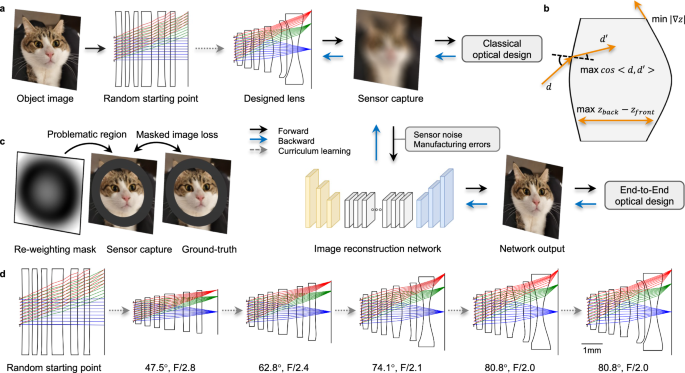Researchers have developed a novel automated lens design method using a technique called curriculum learning, addressing challenges in creating complex imaging lenses. The new framework leverages differentiable ray tracing to simulate how camera images are captured and to fine-tune lens parameters. This approach tackles issues like flawed lens shapes and designs that get stuck in suboptimal configurations during the optimization process.
The curriculum learning strategy breaks down the complex lens design into a series of simpler steps, gradually increasing the difficulty. This mimics how students learn, starting with easier concepts and progressing to more complex ones. Key elements of this strategy include a gradual increase in design difficulty, optical regularization to prevent unwanted lens shapes, and a dynamic re-weighting mask to guide the design process away from poor solutions.
In experiments, this curriculum learning method successfully designed high-performance lenses, even starting from basic, almost flat lens shapes. It proved effective in creating lenses with wide fields of view and large apertures, specifications that are typically challenging to achieve through automated design. The method was shown to overcome limitations of previous approaches, which often failed to produce functional lenses under similar design demands.
Furthermore, scientists demonstrated the versatility of this curriculum learning approach by designing an extended depth-of-field (EDoF) lens for computational cameras. These specialized lenses, combined with computational image processing, allow for sharp images even when objects are at varying distances. The innovative lens design incorporates a hybrid surface that blends conventional aspheric shapes with unique polynomial elements to control image blur in a way that facilitates computational correction.
The EDoF lens was paired with an image reconstruction neural network to sharpen images captured by the lens. Testing showed that this integrated system produced consistently clear images across a wide range of distances, from very close objects to far-away scenes. Compared to traditional lenses, and even EDoF lenses using simpler designs, this new lens and computational approach delivered superior image quality and depth-of-field performance. The research highlights the potential for this automated lens design method to create advanced optical systems for diverse imaging applications.

Leave a Reply